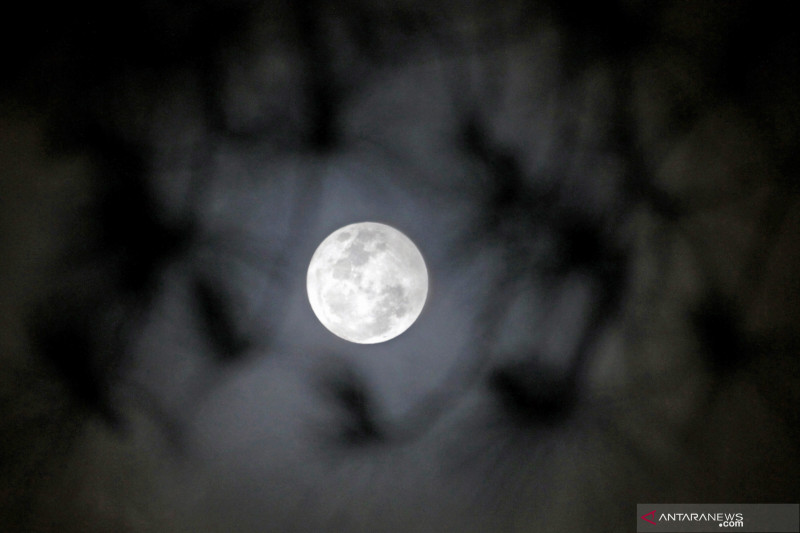Jakarta (ANTARA) – Researcher from the Space Science Center of the National Institute of Aeronautics and Space (Lapan) Andi Pangerang said the phenomenon of the blue moon or blue moon can be observed throughout Indonesia on Sunday (22/8).
“This time the blue moon can be seen throughout Indonesia from sunset to before sunrise the next morning,” Andi said when contacted by ANTARA in Jakarta, Thursday.
The blue moon is visible in the East-Southeast to West-Southwest direction. For latitudes of 1-2 degrees North Latitude (LU), the blue moon will be overhead at midnight.
Also read: LAPAN: super blue blood moon clearly visible in Pontianak
Andi said that there are two definitions of a blue moon, namely a seasonal blue moon and a monthly blue moon.
Seasonal Blue Moon, which is the third full moon of one of the astronomical seasons in which there are four full moons.
Monthly Blue Moon, which is the second full moon of one of the months in the Gregorian calendar in which there are two full moons.
The full moon on August 22, 2021 is a seasonal blue moon. In the Maine Farmers’ Almanac in the United States, the full moon is called the Full Sturgeon because in August, the Sturgeon fish (a caviar-producing fish) comes to the surface of the lake so it is easy to catch.
The full moon also has other names, namely Green Corn Moon, Black Cherry Moon and Flying Up Moon.
The seasonal blue moon occurs every two or three years, previously on May 19, 2019 and May 22, 2016. The phenomenon will occur again on August 20, 2024 and May 20, 2027.
Also read: In Bukittinggi, people line up using binoculars to capture the lunar eclipse
Monthly blue moons also occur every two or three years, previously on July 31, 2015 and January 31, 2018. This phenomenon will occur again on August 31, 2023 and May 31, 2026.
Andi said the Blue Moon was not actually blue. The historical origins of the term and its two definitions are still ambiguous and most consider it a misinterpretation.
Many people believe the term “blue moon” which is interpreted as something that happens very rarely comes from when smog and volcanic ash from volcanic eruptions turn the moon blue.
The term “blue moon” dates back at least 400 years from current searches, in which a Canadian folklore speaker, Dr. Philip Hiscock, suggested that the mention of a “blue moon” means that something is odd and will never happen.
A truly blue blue moon can occur very rarely and has nothing to do with the calendar, the phases of the moon or the fall of the seasons, but rather a result of atmospheric conditions. Volcanic ash and smog, airborne droplets, or certain types of clouds can cause a full moon to appear bluish.
Reporter: Martha Herlinawati Simanjuntak
Editor: Triono Subagyo
COPYRIGHT © ANTARA 2021
–


